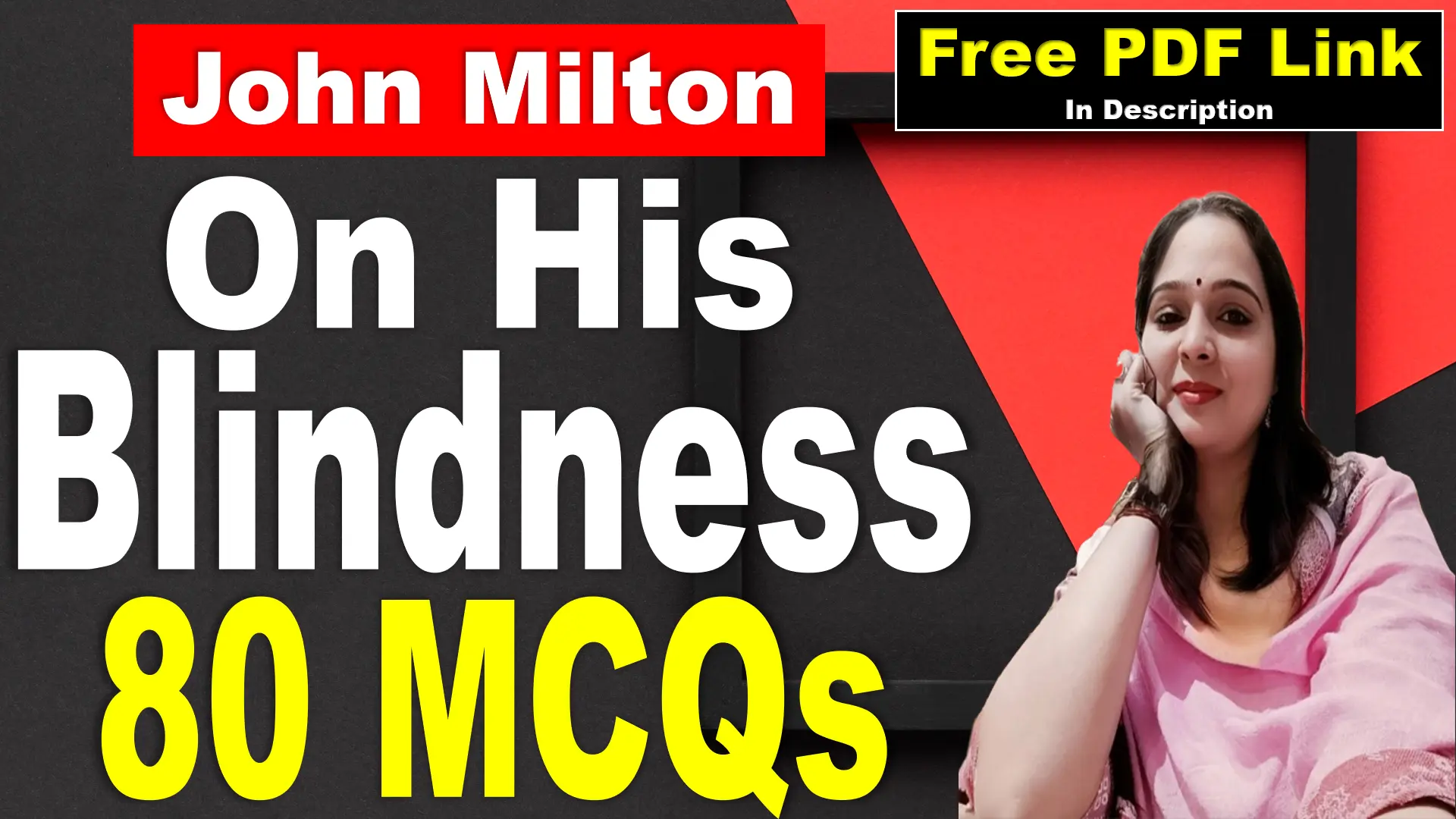
Essay Type Questions
Write the critical appreciation of the poem.
Introduction: “A Poet’s Epitaph” is a poem by William Wordsworth that reflects on the nature of life, death, and the value of simplicity. Wordsworth uses the poem to question the importance of professional and intellectual achievements and to highlight the virtues of living a humble and simple life.
Central Idea: The main idea of the poem is that worldly success and intellectual pursuits are not what matter when it comes to resting peacefully in death. Instead, Wordsworth believes that a modest and humble life, which finds joy in simple things, is more fitting for the grave.
Structure & Rhyme Scheme: The poem is made up of 15 quatrains (four-line stanzas), with a regular rhyme scheme of ABAB. This consistent pattern gives the poem a smooth, rhythmic flow that helps convey its reflective message about the nature of death and the value of simplicity.
Theme:
Nature and Simplicity: Wordsworth values the simple beauty of nature over the complexity of professional and intellectual achievements. He suggests that these simple joys are more suitable for resting in peace.
Critique of Professions: The poem criticizes various professions like politicians, lawyers, doctors, and philosophers, suggesting that their achievements and concerns are irrelevant in the context of death.
Humility and Modesty: Wordsworth praises those who live a humble life and find happiness in everyday things. He believes such people are best suited for the grave.
Intellectual Pursuits and Death: The poem argues that intellectual activities and deep thinking are out of place in death. Wordsworth suggests that such pursuits are not suitable for peaceful rest.
Style: Wordsworth uses a reflective and straightforward style to communicate his ideas. The language is simple and conversational, making it clear and direct. This style helps emphasize the poem’s message about the value of a humble and reflective life.
Poetic Devices:
Imagery: Wordsworth creates vivid pictures of nature, like “running brooks” and “noontide dew,” to highlight the contrast between the peace of nature and the complexities of societal roles.
Symbolism: The grave symbolizes peaceful rest, while societal roles represent worldly success. The humble person symbolizes the ideal qualities for resting peacefully.
Irony: The poem uses irony by suggesting that the qualities celebrated in life—such as ambition and intellect—are actually unsuitable for the grave.
Critical Commentary: Critics often praise Wordsworth for his ability to compare the simplicity of nature with the complexities of societal roles. They see the poem as reflecting his Romantic ideals, which value inner reflection and the beauty of nature over material and intellectual achievements. The poem challenges traditional notions of success and achievement.
Message: The main message of the poem is that true peace and worth come from living a humble and simple life. Wordsworth argues that societal roles and intellectual achievements are less important than finding contentment in everyday experiences, which are more fitting for the grave.
Conclusion: “A Poet’s Epitaph” is a thoughtful poem that explores the importance of simplicity and humility in life and death. Wordsworth uses its structured form and vivid imagery to challenge conventional ideas of success and to advocate for a life of modesty and contentment. The poem encourages readers to reconsider what truly matters for a peaceful and fulfilling life.
Long note on themes used in the poem “A Poet’s Epitaph” by William Wordsworth
1. Nature and Simplicity:
Wordsworth values nature and simplicity over worldly success. He uses images of nature, like brooks and morning dew, to show that these simple, natural things are more suitable for resting in peace than the complicated concerns of society.
2. Critique of Professions:
The poem criticizes various professions—such as statists, lawyers, doctors, and philosophers—suggesting they are not suited for the grave. Wordsworth believes these roles, focused on power or intellect, are less fitting for peaceful rest compared to a humble, simple life.
3. Humility and Modesty:
Humility and modesty are central to the poem. Wordsworth praises the humble person who lives a simple life and finds joy in everyday things. This kind of person is seen as the best fit for the grave because of their reflective and modest nature.
4. Intellectual Pursuits and Death:
Wordsworth argues that intellectual activities and deep thinking are out of place at the grave. He suggests that philosophers and intellectuals, who focus on abstract ideas, are not suited for the quiet, peaceful nature of death.
5. Peacefulness of the Grave:
The poem describes the grave as a peaceful resting place where the concerns of life are left behind. Wordsworth believes that only those who have lived a humble and simple life can truly rest peacefully there.
6. Value of Everyday Life:
Wordsworth highlights the importance of finding beauty and meaning in everyday life. He admires people who appreciate simple, daily experiences, contrasting them with those who seek grand achievements or intellectual recognition.
7. External Success vs. Inner Peace:
The poem contrasts worldly success with inner peace. Wordsworth suggests that achievements and societal status are less important than personal qualities like humility and contentment, which are more suited to the grave.
In simple terms, Wordsworth’s poem argues that nature, simplicity, and humility are more valuable than worldly success or intellectual pursuits when it comes to finding peace in death. The poem suggests that the grave is best suited for those who have lived a modest, reflective life, appreciating the simple things.





